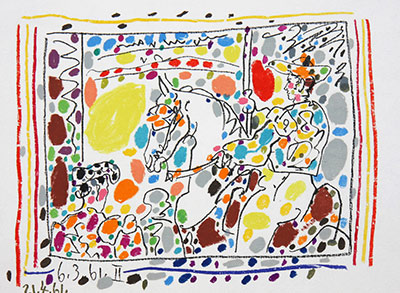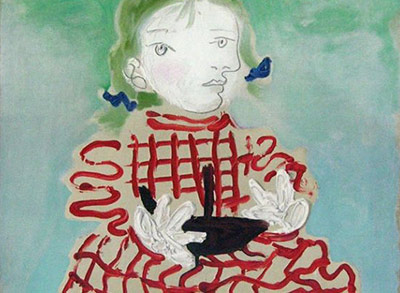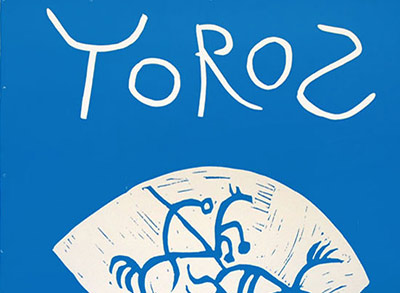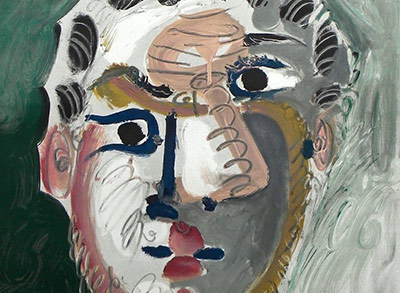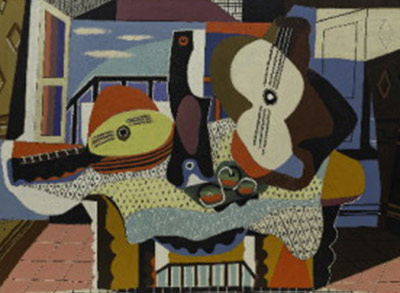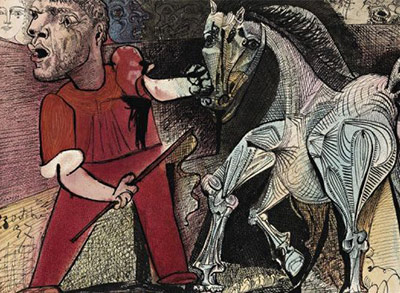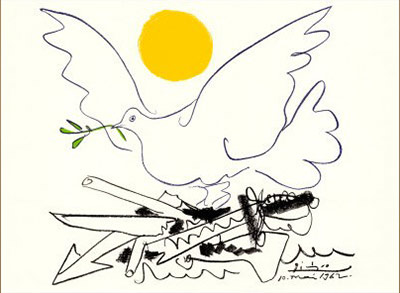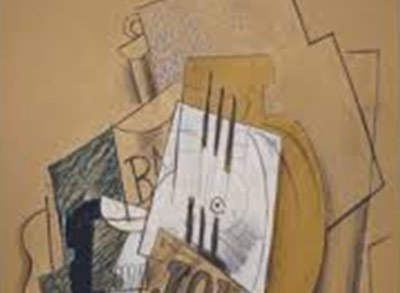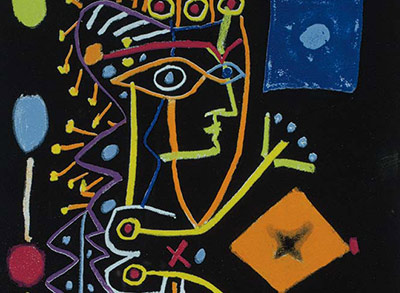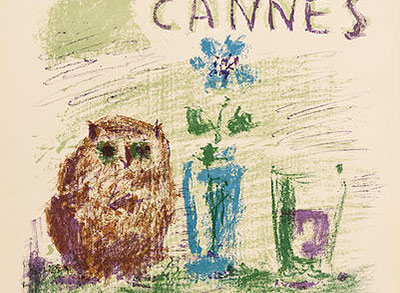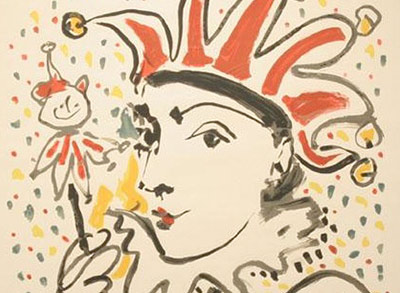Pablo Picasso was born October 5, 1881 in Malaga, Spain, and from a very early age displayed a tremendous talent for drawing. His father encouraged his artistic ability as a young boy, and when the family moved to Barcelona in 1895, Picasso was admitted to the prestigious School of Fine Arts. Only two years later, Picasso moved to Madrid to attend the San Fernando Academy of Fine Arts. But once again frustrated by the limitations and regulations of these art schools, Picasso truly found his refuge amongst a group of radicals and avant-garde artists he met in Barcelona in 1899 at a local cafe called El Quatre Gats. It was then he decided to break from the classical ideals and cut his own path in the art world through risk, innovation and experimentation. Over the next several years, Picasso debuted the paintings from his famous “Blue Period” (1901-1904) and “Rose Period” (1904-1906) before shocking the art world with Les Demoiselles d’Avignon (1907). The painting portrayed such radical reductionism and scandalous manipulation of space otherwise unheard of in the art world until then, and it drew severe criticism and succeeded in polarizing Picasso’s friends and fellow artists. Today, the painting is considered to be the precursor and catalyst for the Cubism movement pioneered by Picasso and fellow artist Georges Braque. Read More
A true artist and innovator, Picasso did not stay with Cubism for the rest of his career, but continually pushed the boundaries of art. From 1918 to 1927, his works adopted the classical style he had abandoned at the academies as a young man, which struck fellow artists and critics as a seemingly strange foray after a career marked by experimentation. However, after a closer examination of Picasso’s personal life at the time of this shift in style, one can see the crucial role women played in Picasso’s life, and subsequently his artwork. It was July 12, 1918 that Picasso wed for the first time—his muse, a Russian ballerina, Olga Khokhlova with whom he had his first son Paulo in 1921.
In 1927, the forty-five year old Picasso began an affair with the now infamous Marie-Thérese Walter, then seventeen. Marie-Thérese was the object of Picasso’s affection and dominated his artwork, introducing a renewed freshness and brightness to his work, reflecting her affect on his personal life. She is the subject of one of Picasso’s most celebrated works entitled Le Reve. This painting was purchased by renowned art collector Steven Cohen in 2013 from Steven Wynn for $155 million, then the highest price ever paid by a US collector for a work of art.
In 1935 Marie-Thérese gave birth to Picasso’s second child, Maya, and in 1936, Picasso found his “private muse” Dora Maar, the photographer, poet and painter. It is thanks to Maar’s faithfully Photographing and documenting that we have such a detailed record of the inception and completion of one of Picasso’s most studied and honored paintings, Guernica. The extraordinary mural is a commentary on the German aerial attack on the Basque town of Guernica during World War II. With this painting and the influence of Maar, Picasso’s work became much more political and embodied his own dedication to the Communist party during this period in his career. Picasso’s time with Dora also marks his Weeping Women series of which Dora is the subject.
In 1943, Picasso met Françoise Gilot, a French painter, and with this new muse we see yet another transformation in Picasso’s artwork. His art grew simpler and more childlike, varying wildly from the complexity of his Cubist or Realist works. Picasso once remarked, "When I was four I could paint like Raphael, but it took me a lifetime to paint like a child.” Gilot and Picasso would spend the next ten years together and have two children, Claude and Paloma. In 1946, Picasso was introduced to ceramics when he visited Vallauris in the Côte d’Azur for an annual exhibition of potters. He would create over four thousand original ceramic pieces over the next twenty years with Suzanne and Georges Ramié who owned Madoura Pottery.
At seventy-two years old, while at Madoura Pottery, Picasso met the twenty-seven year old Jacqueline Roque. With the invocation of yet another new muse we begin to see the influence of line and form on the master’s canvas. Jacqueline would become Picasso’s second wife in 1961 and the dominant subject of his artwork, as he painted her over 160 times in 1963 alone. It is believed that Picasso’s series The Woman of Algiers, which pays homage to Eugene Delacroix was inspired by Jacqueline’s beauty. “Delacroix had already met Jacqueline,” Picasso had commented.
Picasso died on April 8, 1973 in Mougins, France, although his indelible mark on the art world will live on forever. Picasso continues to influence emerging artists, and excite and entice collectors and art enthusiasts around the world. His track record as the most frequent #1 spot holder for the Top Ten Artists at Auction speaks for itself, with private collectors and prominent museums and public collections clamoring for his works. Most recently Picasso made the news for overshadowing Monet in a London auction. Picasso’s 13 1/2-inch-tall terracotta sculpture of an owl created in 1953 went for 1.3 million pounds against a high estimate of 450,000 pounds. Picasso’s iron and steel maquette -- the model for his sculpture at Chicago’s Civic Center -- sold for 8.9 million pounds against a high estimate of 7 million pounds.
